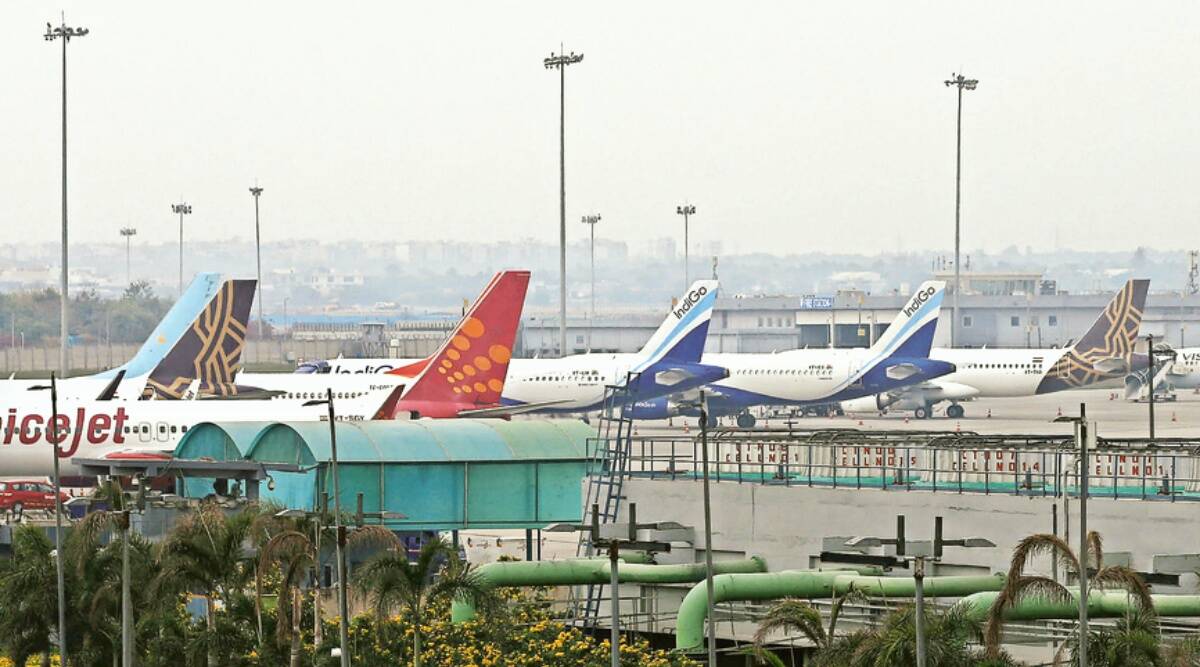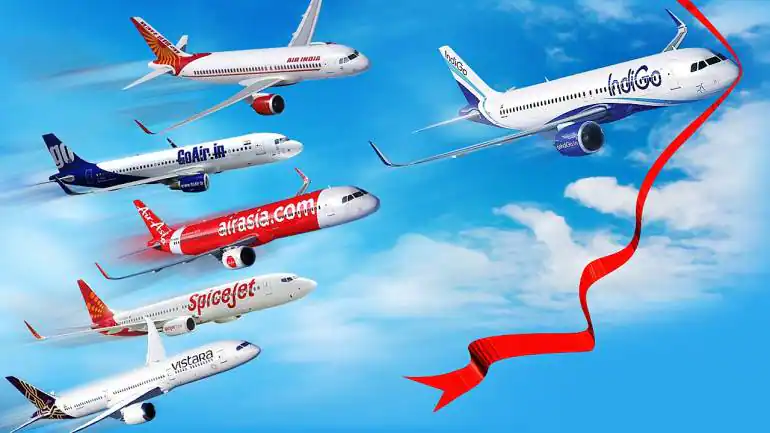Domestic air traffic is recovering from the Covid hit, having surpassed the pre-pandemic daily passenger figure of 4 lakh, and the aviation sector is now experiencing a fresh dose of competitiveness in the form of a fierce war for second place.

IndiGo, the low-cost carrier, maintains its lead with more than half of the domestic market share, while Air India, SpiceJet, and GoFirst are vying for second place.
According to the Directorate General of Civil Aviation’s (DGCA) monthly traffic figures for March, GoFirst became the third airline this year to hold the No. 2 position in terms of passenger market share, behind Air India and SpiceJet.
IndiGo had a market share of 54.8 percent in March, followed by GoFirst (9.8%), SpiceJet (9.5%), Vistara (8.9%), and Air India (8.8 per cent). Air India (11.1%), SpiceJet (10.7%), Vistara (9.7%), and GoFirst (9.7%) took the second and third places, respectively, in February (9.5 per cent).
SpiceJet had claimed the second place following the grounding of Jet Airways, which had a strong claim to being the country’s second largest domestic airline in terms of passengers carried, prior to the epidemic.
Air India had a market share of 13.4 percent in May 2019, the first full month of operations after the Jet’s grounding, followed by SpiceJet (14.8 percent) and the defunct GoAir (11.1 per cent). IndiGo’s market share during that month was 49 percent, owing to the fact that it benefited greatly from Jet’s demise.
SpiceJet had a market share of 16.5 percent in December 2019, while Air India had a market share of 11.9 percent.
“Capacity deployed is also a function of market share.” SpiceJet was the obvious number two for a while, but then they shrank, allowing others to take their place. Air India, GoFirst, and SpiceJet are all near to one other in terms of capacity. The number two airline moves with a few thousand passengers here and there,” said Ameya Joshi of aviation intelligence portal NetworkThoughts.
The grounding of Boeing 737 MAX aircraft was one of the reasons SpiceJet reduced capacity, in addition to the airline’s perilous financial state. The airline, which is owned by Ajay Singh, had intended to introduce 737 MAX planes to supplement and replace its existing fleet of earlier model 737 planes. The MAX, on the other hand, was grounded worldwide following two fatal accidents in Indonesia and Ethiopia. The plane’s prohibition in India was removed in August 2021.
Similarly, Air India’s fleet expansion plans were put on hold following the government’s decision in 2017 to sell its interest in the airline.
Meanwhile, IndiGo and GoFirst were growing their fleets. IndiGo has 276 aircraft in its fleet, while Air India has 79 narrow-body planes and 49 wide-body jets, just a few of which are used on domestic routes, according to the most recent numbers available. SpiceJet has a fleet of 91 planes, including Boeing 737s and Bombardier Q-400s, as well as 57 narrow-body Airbus A320 planes operated by GoFirst.
The race for No. 2 is anticipated to heat up, according to analysts. Following Tata Group’s acquisition of Air India, the airline is set to embark on a fleet expansion plan. In addition, with at least one new national airline set to launch next year, the market may see more competition.
“It has the potential to be a breakout.” If Air India can have more planes ready to fly and deploy, they will simply take over that position. Similarly, if SpiceJet and GoFirst introduce more MAX panes, they will,” Joshi added.
Vistara, a full-service airline partially owned by Tata Group, has also been receiving new narrow-body planes to add to its inventory. The airline is tied for third place with its sister airline, AirAsia India, which is also controlled by the Tata Group. AirAsia India had a 6.5 percent market share in March.
